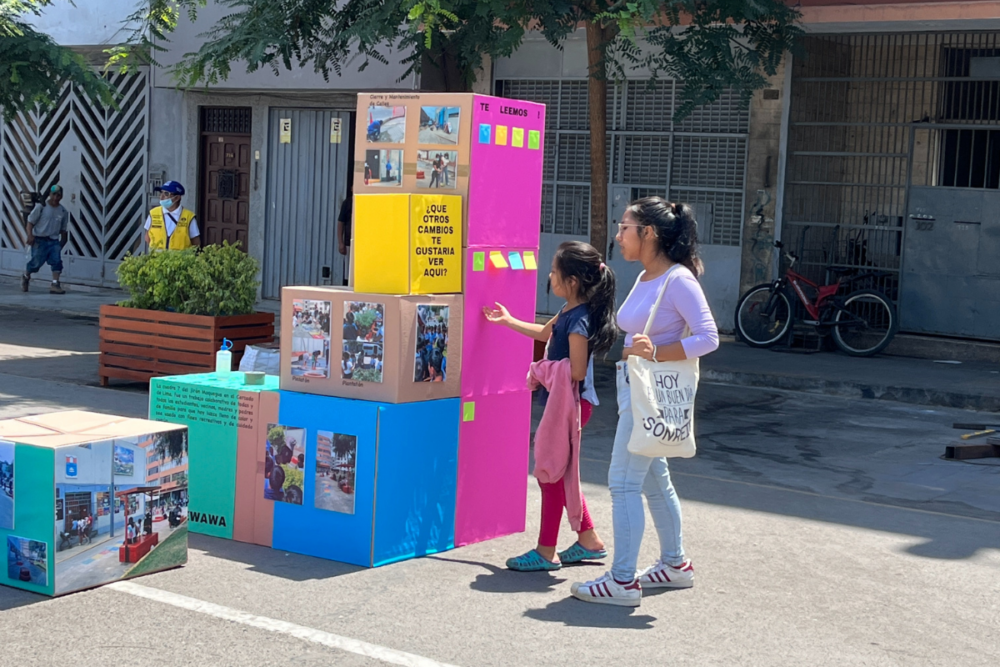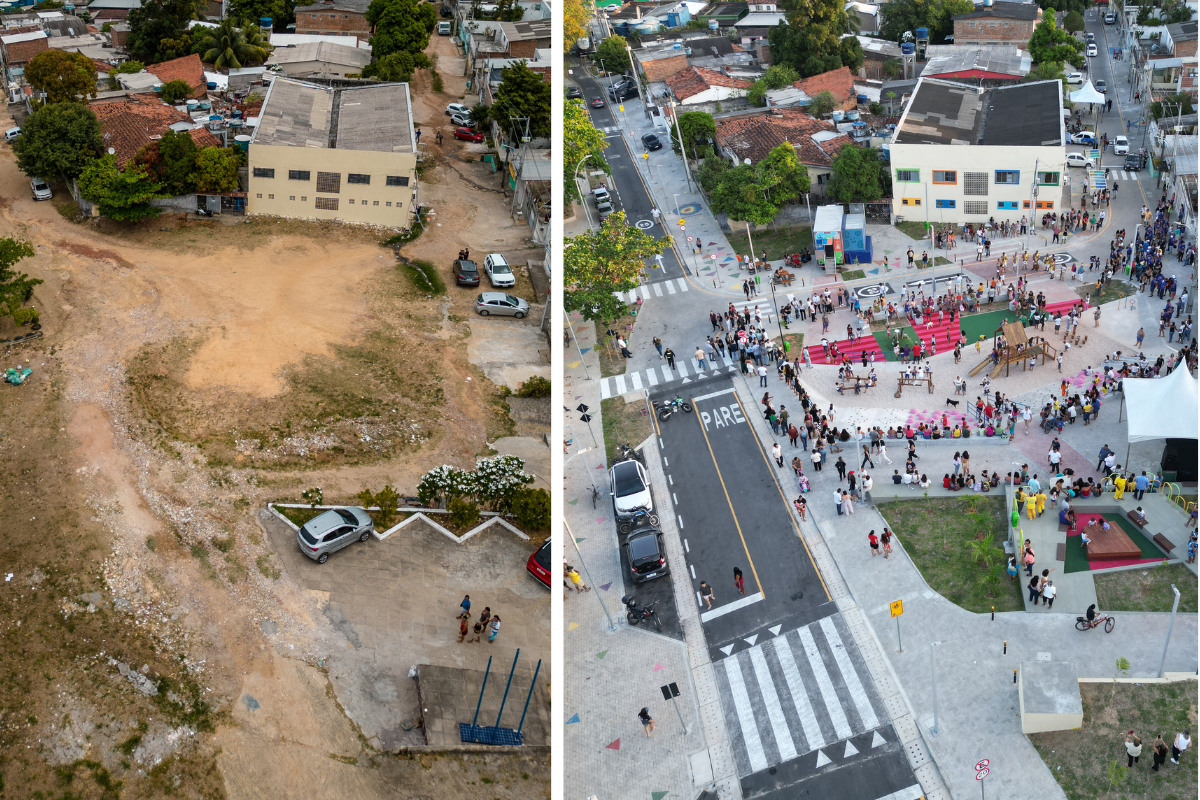This World Children’s Day, the Global Designing Cities Initiative (GDCI) is stepping up to Listen to the future! with the release of two new booklets, “How to Engage Kids in Street Design” and “How to Evaluate Street Transformations Near Schools.” These resources, supported by the FIA Foundation, Fondation Botnar, and the Van Leer Foundation, supplement the award-winning “Designing Streets for Kids” guide, recently translated into its ninth language. Combined, they offer cities extensive evidence, inspiring global case studies, and practical tools to support long-term and meaningful change in kids’ ability to safely move, play, and enjoy the streets in their cities.
“Although the lack of data on children’s and caregivers’ mobility often leaves their needs unnoticed, measuring the impact of street transformations and actively listening to them through engagement activities can support evidence-based decision-making, amplify key issues, build support, secure funding, and advocate for long term change,” said Skye Duncan, Executive Director of GDCI. “As supplements to the Designing Streets for Kids guide, these booklets offer detailed and practical ‘hands-on’ guidance around engaging kids and evaluating street design transformations near their schools, based on our lessons learned working with cities around the world.”
Earlier in November 2024, we were thrilled to formally launch the two booklets as part of the twelfth World Urban Forum (WUF12) session, which was held in Cairo, Egypt, and hosted over 25,000 participants from 180 countries.
Incorporating insights from over 100 experts in over 45 cities worldwide, the booklets equip public sector leaders, practitioners, local non-profits, educators, community members, and advocacy groups with evidence, case studies, strategies, and tools grounded in global practices to involve children in street design and understand how street transformations impact young people and their communities. The booklets are now available to download, just like other GDCI resources, at https://globaldesigningcities.org/guides-publications.
Combining GDCI’s experience and fieldwork insights, “How to Engage Kids in Street Design” is a practical resource offering concepts, tools, and case studies to inspire meaningful engagement with kids in shaping their streets. The booklet demonstrates how engaging kids in street design can facilitate information sharing between children and city leaders, encourage kids to advocate for better streets and involve them in street design projects. Download the booklet to access ready-to-use activity templates for children of all ages.
“How to Evaluate Street Transformations Near Schools” offers guidance for assessing street design projects around schools by focusing on different project goals, from road safety and health to noise reduction and play. It is crucial to measure and evaluate the impact of these changes to support evidence-based decision-making, amplify key issues, build support, secure funding, and advocate for longer-term change. Recognizing that evaluating street transformations near schools requires a specialized approach that acknowledges the unique needs, vulnerabilities, and dynamics of school environments, the handbook offers a focused lens through which these environments can be assessed and improved and offers step-by-step resources for planning the evaluation process, selecting key metrics, conducting data collection, and analyzing and communicating key findings. Featuring diverse global case studies, it demonstrates how data can support long-term change. Download the booklet to access ready-to-use data collection forms and interactive boards.
Invited to share her experience, Taciana Ferreira, head of CTTU, the traffic and transportation agency of Recife, Brazil, outlined the impact that resources for engaging kids in street design had on her work to promote child-friendly streets in the city: “The city of Recife has been undergoing transformation for several decades, generating new uses for its common living spaces, such as its streets, which must be safe, inclusive, attractive, connected, and used by everyone. To this end, encouraging people to change their paradigms is part of this transformation; Over time, we have realized that to better understand public spaces, decision-makers and communities must discuss them on a case-by-case basis, understand the local context, the daily needs, and aspirations of the people who use the spaces. In this process, the participation of a new group is increasingly important: children. Their simple expression of requests for toys, contact with nature, rivers and bridges, and other modes of transportation, such as walking, rollerblading, skateboarding, and cycling, reveals the essence of what we want for our city streets.
The project on Rua Silva Jardim and Rua 22 de Agosto in the Jordão neighborhood in the city of Recife provided us with pleasant surprises, where the engagement with adults, young people, and children was built in a genuine and collaborative way, not only due to the residents’ desire for the project but mainly due to the schools involved and the participation of everyone in this process. Today, closer to the moment of its delivery, we are certain that the “Rua das Crianças” (“Streets for Kids”) program brings us learning about belonging and ownership of the street for those who use these spaces the most, with children being their main source of inspiration and knowledge.”
We believe evaluating projects and involving children and caregivers in street design is crucial to creating safer and healthier environments. We hope these new resources inspire cities worldwide to imagine what’s possible in their streets. We’d love to see your Streets for Kids in action! Post about your work on LinkedIn, X, or Instagram and tag @global.streets or use the hashtag #StreetsForKids.
















